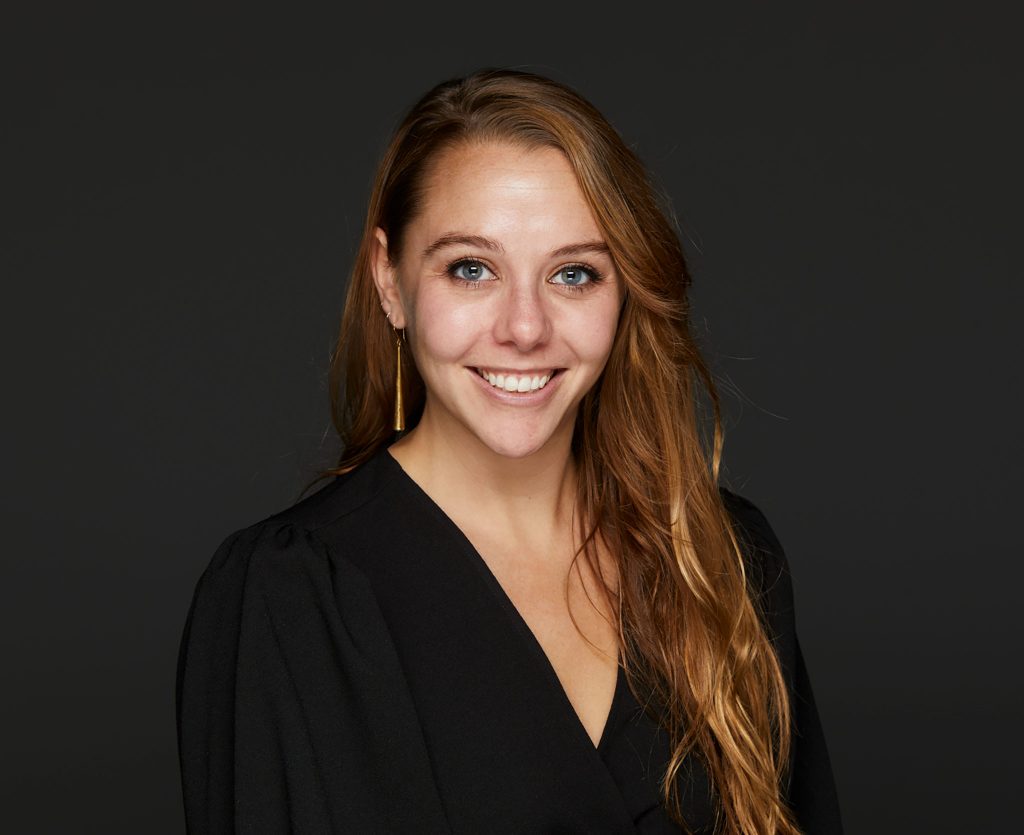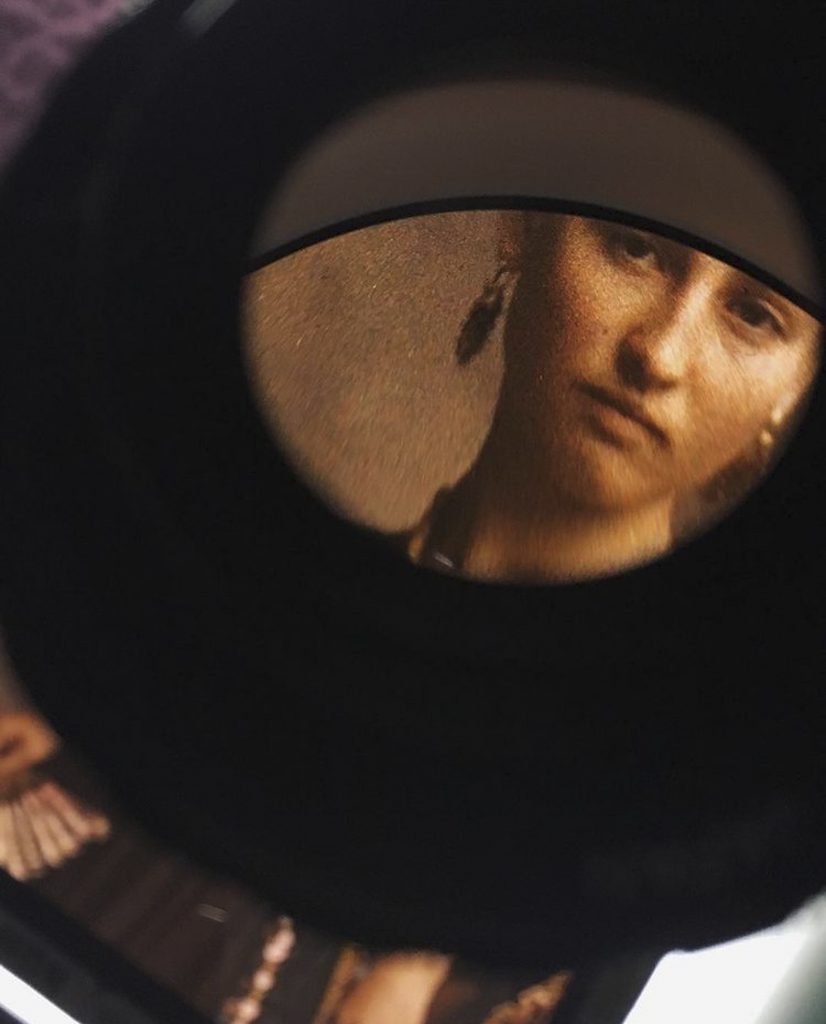
As a college student at the University of Missouri, Mallory Benedict wrote a letter to a high school friend telling her that it was her dream to one day work at National Geographic.
“I was studying photojournalism at the time and knew that I was entering into an extremely competitive field,” Mallory says. “At the time, this dream felt out of reach.”
Mallory’s friend recently sent her a photo of the original letter – just as Mallory was celebrating seven years working for National Geographic as a Photo Editor.
As part of her role, Mallory actively seeks out new talent to diversify National Geographic’s roster of contributors. She is also a programs manager for Women Photograph, a nonprofit that launched in 2017 as a database of women and nonbinary photographers around the world, and coordinates the year-long mentorship program.
“It’s so inspiring for me to see how accomplished the mentees are year after year, and the robust vision they have of the world and their work so early in their careers,” Mallory says.
1. For aspiring photographers and photo editors, working at National Geographic is a dream job. Do you ever pinch yourself?
That’s definitely true for me! During college while studying photojournalism, I discovered that I actually preferred being one step further removed from the camera. I found I loved production, photo editing, and working with photographers. I knew that getting a job as a photo editor without much experience would be difficult with little experience under my belt, but I ended up getting an internship with National Public Radio shortly after I graduated, and the relationships I formed there were really transformative for my career. It was those relationships that brought me to National Geographic seven years ago.
2. As part of your involvement with Women Photograph, you oversee the mentorship program. Who has been the most influential mentor in your life?
I’ve been fortunate to have several wonderful mentors in my life. In college, my professors Jackie Bell and Liz Brixey were extremely supportive as I was navigating my place in this industry. Nicole Werbeck, who I worked with at NPR and here at National Geographic has always been there for me for advice and guidance.
I also learn so much from the photographers I work with every day and my amazing colleagues. There’s always so much to be gained from learning from a broad array of experiences and perspectives. I think mentorship can seem like an intimidating, formal relationship, but really it just comes from forming relationships with people you trust and using them as a guiding light when you’re trying to find your way.
3. While photo editing can often be a fast-paced job, sometimes you can be working on a story for months or even years. Is there one long-term assignment you’ve worked on that is particularly memorable?
What I love about my job is that I straddle the print and digital world pretty evenly. One story that comes to mind is one that published in December on the importance of singing lullabies around the world. Photographer Hannah Reyes Morales first pitched the idea in 2018 and I was instantly curious and knew I wanted to collaborate with her on it.
For the story, Hannah traveled to five different countries, examining the universal connection lullabies make between caregiver and child, despite the various challenges people are facing. Often lullabies share their own stories – tales of tradition, fears, and love; so, we wanted to incorporate the lullabies into every aspect of the story. To do this we worked with audio producer Rupert Compston, who travelled with Hannah and gathered the sound of the lullabies in each place they visited.
In order to bring the songs to the pages of National Geographic magazine, we published QR codes, which the reader could scan to hear the lullaby on that page. This was an experiment for us, but really helped bring the lullabies to life.
4. As a photo editor, you have to share at least one photo. What has been a favorite photo you’ve taken that captures your career at National Geographic?
This is the hardest question of all! Ironically, I don’t really take many photos myself, except for with my iPhone here and there. As a photo editor, we look through tens of thousands of images before coming up with the dozen-or-so images you see in the magazine, but it’s hard to think of one that I’ve taken that sums up working at National Geographic.

Of the photos I’ve taken, I would say this image from the photo archive in the basement of National Geographic inspired a true sense of awe and curiosity at working at a place with such an extensive visual history. I took this the first time I went down to the archive in almost exactly five years ago, when I got to look at some of the autochromes in our collection through a loupe to see the fine grains of dyed potato starch used to colorize it. National Geographic has over 15,000 of these delicate glass plates, the second largest collection in the world.
There are little pockets of mystery and story within the Nat Geo building, and the archive is one of those treasured spaces for me and informs a lot of the pieces I work on today. One that comes to mind is a story I worked on with writer Nina Strochlic about some of the early, but lesser-known, female National Geographic Explorers.
Looking at the thousands of images in the archives, you find stories within stories – everything from the way an image was made (from autochromes made with potato starch, to slides made by film) to who made the image, to what the caption said. All of these things informed the narrative we told the world, and information we can build on as we tell stories today. It’s inspiring to me to see how we can use the knowledge of our own history as we tell stories in the present, with an ever-evolving group of storytellers.
5. After working from home for the past year due to the pandemic, what has been the silver lining for you?
I’ve been lucky enough to be with my parents in Arizona for almost the entire year. I learned that having access to the outdoors and being in a warm (sometimes very warm) environment is hugely helpful for my mental health.
Being able to safely enjoy the outdoors and go hiking and mountain biking has been a great source of inspiration for me. It also gives me time to think about new ideas and the energy to pursue them!
The pandemic has also taught me to slow down and be grateful for what I have in my life. It’s given me time to reconnect with my family, and the time to read, write, and get reacquainted with myself.